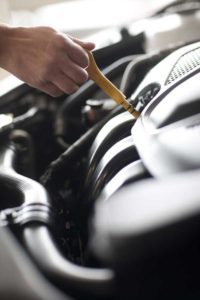OBDII
What is OBD-II?
 OBD stands for „On-Board Diagnostics“ and is used within cars and trucks. It has been introduced by the California Air Resources Board in 1988.
OBD stands for „On-Board Diagnostics“ and is used within cars and trucks. It has been introduced by the California Air Resources Board in 1988.
All cars which have been licensed since the 1st January 2000 (benzine) or the 1st January 2003 (diesel) in the EU, have to support OBD. In the US OBD-II is required since 1st January 1996.
The OBD standard defines an OBD connector, which can be used to communicate with the car’s electronic. There are two main applications for OBD:
- In most countries the exhaust emission must be tested on a regular basis. By using OBD it is possible to read out real-time data like the temperature of the engine, the engine speed, and the throttle position. These values are needed by the test equipment.
- Cars are getting permanently more complex. This makes the error diagnosis sometimes very complicated even for simple errors. Using OBD the garage can read out the trouble code memory of the car. If the car itself detects e.g. that a component of the airbag is no longer working, it can store the proper trouble code in the memory. The garage can read out this trouble code using a diagnostic tool.
Besides the standardised functions most car manufacturers implement proprietary functions: e.g. configuration of the ECUs (electronic control units) or more detailed trouble codes. Additionally commands can be sent to the car. This is very comfortable but open a path to the car which implies some risks.
Standards
OBD is specified by the following standards:
- ISO 9141: Road vehicles — Diagnostic systems
- ISO 11898: Road vehicles — Controller area network (CAN)
- ISO 14230: Road vehicles — Diagnostic systems — Keyword Protocol 2000
- ISO 15031: Road vehicles — Communication between vehicle and external equipment for emissions-related diagnostics
- ISO 15765: Road vehicles — Diagnostics on Controller Area Networks (CAN)
- SAE J1850: Class B Data Communications Network Interface
The standards allow to use different communication buses over the OBD connector: J1850, ISO 9141, and CAN. In older cars J1850 and ISO 9141
is used. Newer cars are using CAN, which is much faster than the older buses.
History
The predecessor of the standardised OBD-II is OBD-I. This bus is not standardised.
The connectors and protocols are different from car manufacturer to car manufacturer. Due to this fact OBD-I was not successfully on the market and has been replaced by OBD-II.
References
http://en.wikipedia.org/wiki/On_Board_Diagnostics (Wikipedia)
http://www.sae.org (Society of Automotive Engineers)
http://www.obdclearinghouse.com/ (National OBD Clearinghouse)
